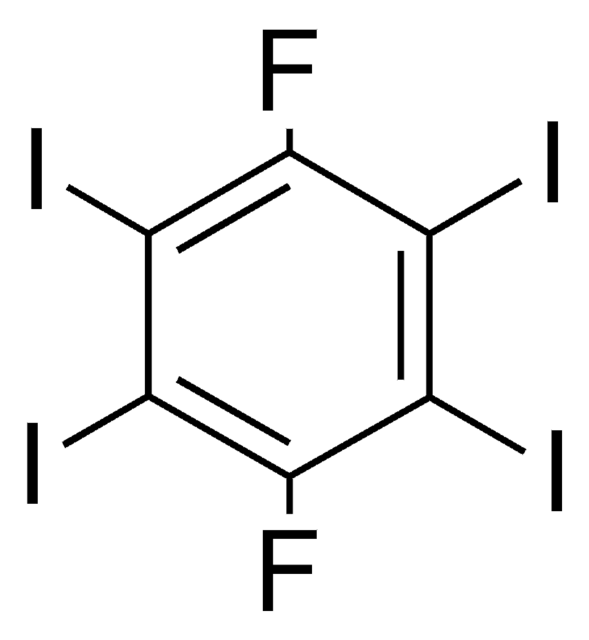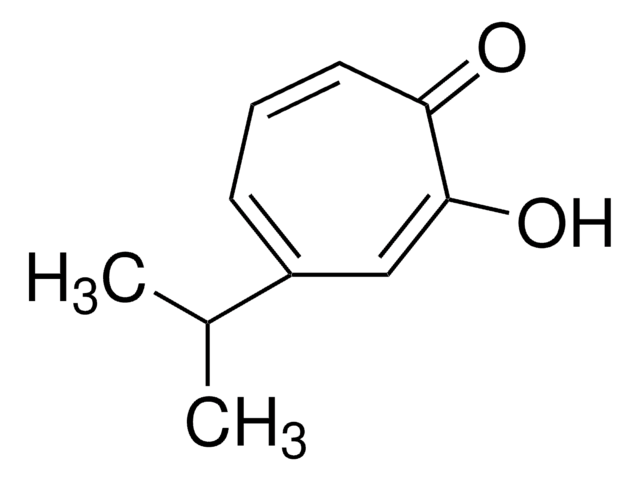T89702
Tropolone
98%
Synonim(y):
2-Hydroxy-2,4,6-cycloheptatrien-1-one
About This Item
Polecane produkty
Próba
98%
tw
80-84 °C/0.1 mmHg (lit.)
mp
50-52 °C (lit.)
temp. przechowywania
2-8°C
ciąg SMILES
OC1=CC=CC=CC1=O
InChI
1S/C7H6O2/c8-6-4-2-1-3-5-7(6)9/h1-5H,(H,8,9)
Klucz InChI
MDYOLVRUBBJPFM-UHFFFAOYSA-N
Szukasz podobnych produktów? Odwiedź Przewodnik dotyczący porównywania produktów
Zastosowanie
It can also be used as:
- A precursor to synthesize azulene derivatives such as methyl 2-methylazulene-1-carboxylate.
- A reagent to prepare fused heterocycles and complexes of Ga(III) and In(III).
Hasło ostrzegawcze
Danger
Zwroty wskazujące rodzaj zagrożenia
Zwroty wskazujące środki ostrożności
Klasyfikacja zagrożeń
Aquatic Acute 1 - Aquatic Chronic 1 - Eye Dam. 1 - Skin Corr. 1B - Skin Sens. 1B
Kod klasy składowania
8A - Combustible corrosive hazardous materials
Klasa zagrożenia wodnego (WGK)
WGK 3
Temperatura zapłonu (°F)
233.6 °F - closed cup
Temperatura zapłonu (°C)
112 °C - closed cup
Środki ochrony indywidualnej
Eyeshields, Gloves, type N95 (US)
Certyfikaty analizy (CoA)
Poszukaj Certyfikaty analizy (CoA), wpisując numer partii/serii produktów. Numery serii i partii można znaleźć na etykiecie produktu po słowach „seria” lub „partia”.
Masz już ten produkt?
Dokumenty związane z niedawno zakupionymi produktami zostały zamieszczone w Bibliotece dokumentów.
Nasz zespół naukowców ma doświadczenie we wszystkich obszarach badań, w tym w naukach przyrodniczych, materiałoznawstwie, syntezie chemicznej, chromatografii, analityce i wielu innych dziedzinach.
Skontaktuj się z zespołem ds. pomocy technicznej










